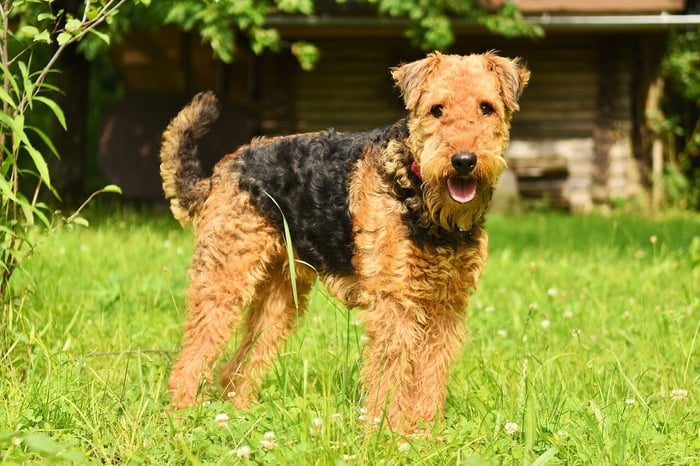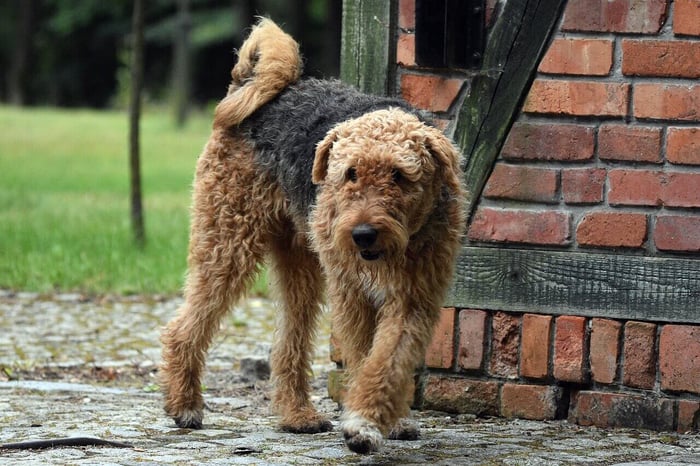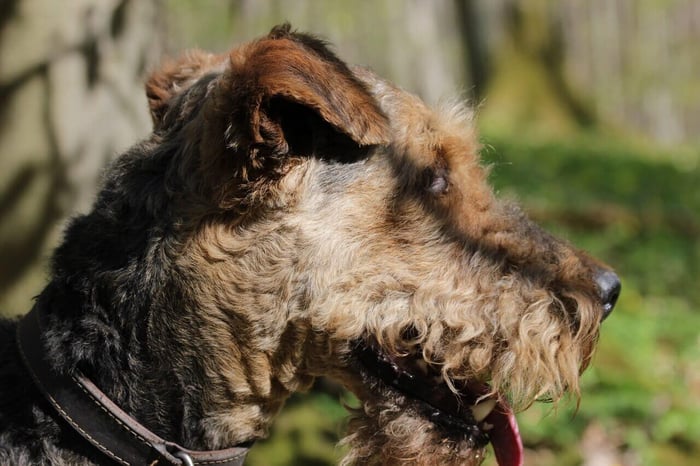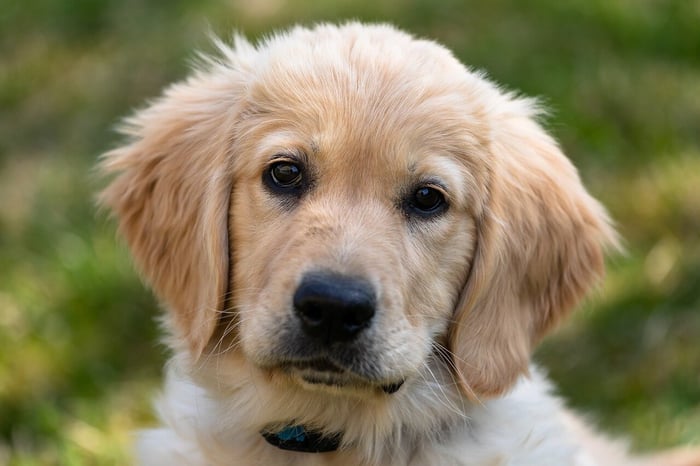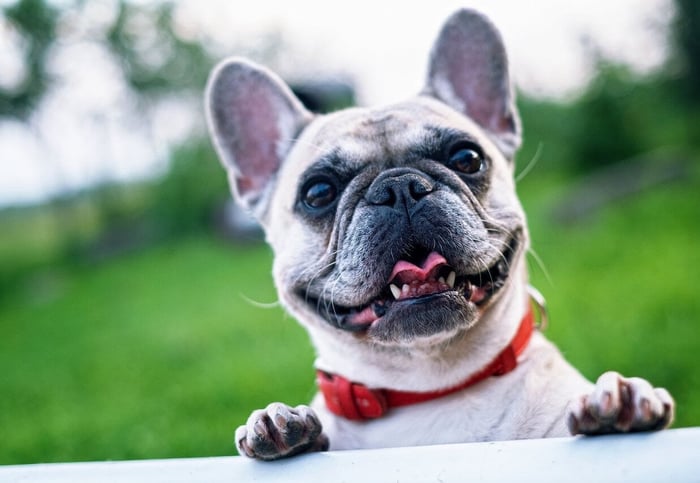Known as the “King of Terriers,” the Airedale Terrier is the largest of all terrier breeds and one of the most versatile working dogs ever developed in Great Britain’s Aire Valley. From bravely serving alongside troops in World War I to lounging today as a great family dog, Airedale dogs have proved they can thrive almost anywhere active U.S. families live.
In this guide we’ll explore every corner of the Airedale Terrier breed—from the spirited energy of Airedale puppies to the confident, protective nature of a full‑grown adult dog. You’ll learn about health concerns such as hip dysplasia, what a professional groomer means by “full grooming” on a wiry coat, and how much daily mental and physical stimulation this popular breed really needs. We’ll also touch on training tips, recommended dog sports, and how to find a reputable breeder or connect with the Airedale Terrier Club of America if rescue is more your style.
Airedale Terrier at a Glance
Before diving deeper, let’s look at some quick facts about the Airedale Terrier dog:
Group: Terrier Group (recognized by the American Kennel Club)
Height: 21 to 23 inches at the shoulder
Weight: 50 to 70 pounds (males are usually larger than females)
Life Expectancy: 11 to 14 years
Coat: Dense, wiry hair with a short undercoat
Colors: Classic black and tan terrier coloring (sometimes called tan terrier)
Energy Level: High; needs lots of daily mental and physical stimulation
Temperament: Intelligent, loyal, courageous, and playful
Most Airedales are incredibly adaptable—whether you’re jogging through city parks or hiking rural trails, these working dogs adjust beautifully to active families willing to meet their energy needs. Thanks to their protective nature, Airedales also make reliable guard dogs, yet they balance watchfulness with a loving, goofy side that makes them great family pets.
A Brief History of the “King of Terriers”
The Airedale Terrier traces its roots back to the mid‑1800s in the Aire Valley of Yorkshire, England. Originally called the Waterside Terrier or Bingley Terrier, this hardworking breed was originally bred by crossing terrier breeds like the now‑extinct Black and Tan Terrier with working dogs such as the Otterhound.
The goal? To create a fearless, versatile hunter that could tackle everything from rats and otters to bigger game like wild boar. In addition to being hunting dogs and expert rodent control specialists, early Airedales were trusted as guard dogs and all‑purpose farm helpers.
When World War I broke out, Airedale dogs took their skills to a new level, serving as messenger dogs, ambulance carriers, and sentries for Allied forces. Some Airedales were even awarded the Victoria Cross for bravery!
Because of their courage, loyalty, and intelligence, airedales thrive in almost any environment where they are given real jobs or outlets for their energy. Their fame spread quickly, and by the early 20th century, Airedales were among the first breeds officially recognized by the American Kennel Club and widely admired in the U.S.
Today, the airedale terrier personality—alert, spirited, and friendly—still reflects its noble history. Whether working on farms, competing in dog sports, or lounging as great family dogs, Airedales continue to be cherished members of many American households.
Temperament & Family Compatibility
If you're looking for a dog that combines sharp intelligence with a playful, adventurous spirit, the Airedale Terrier might be your ideal match. Known for their protective nature and affectionate side, Airedales are excellent companions for families who enjoy active lifestyles.
Airedale Terrier Personality
The typical airedale terrier personality is outgoing, confident, and sometimes a little stubborn—traits that reflect their working‑dog roots. They're fiercely loyal to their families and usually bond especially closely with children, making them great family dogs. However, early socialization with other pets and other animals is important to prevent territorial behavior.
While not aggressive by nature, Airedales take their role as guard dogs seriously. They're alert and brave but generally not quick to bite unless they sense a real threat. Their protective instincts make them excellent watchdogs for modern households.
Are Airedales Good with Other Dogs and Pets?
With proper training and early socialization, Airedales can live harmoniously with other dogs and small animals, though some individuals may retain a strong prey drive due to their history as hunting dogs. Careful introductions and positive reinforcement help build good relationships between an Airedale and other pets.
Family Life with an Airedale
Airedale puppies are lively, curious, and full of energy, requiring patient training from a young age. An adult dog still needs daily challenges to stay out of trouble—think interactive toys, obedience games, and adventurous outings.
If you're ready to commit to consistent training and plenty of play, the Airedale can be one of the most rewarding and fun‑loving companions in the world of dog breeds. Their balance of affection, brains, and bravery makes them a fantastic addition to active families across the U.S.
Exercise & Mental Stimulation Needs
The Airedale Terrier is a natural athlete. Originally developed as a rugged working dog, this breed thrives on vigorous activity and problem-solving challenges.
Daily Physical Exercise
Expect to give your Airedale at least one to two hours of exercise every day. This could include brisk walks, hikes, runs, or structured play sessions. Without sufficient activity, Airedales may resort to undesirable behaviors like digging, chewing, or barking.
Dog Sports and Fun Challenges
Because they are such intelligent, driven dogs, Airedales excel in dog sports like agility, obedience, rally, scent work, and even dock diving. These activities tap into both their mental and physical energy and help strengthen your bond.
Many Airedale owners find that involving their dog in competitive activities or advanced trick training prevents boredom and curbs stubborn streaks. Mental and physical stimulation are equally important for maintaining a happy, well-balanced Airedale.
Activities for Airedale Puppies vs. Adult Dogs
Airedale puppies have bursts of energy and benefit from short, controlled exercise sessions along with lots of positive experiences to build confidence. Adult Airedales can handle more intensive workouts but still appreciate time to sniff, explore, and think on walks.
Keeping your Airedale active and mentally engaged is not just a suggestion—it’s essential to raising a well-behaved, content companion who will truly thrive.
Grooming & Coat Care
One of the most iconic features of the Airedale Terrier is their dense, wiry coat. While this coat is part of what makes Airedales so handsome, it also requires regular care.
Understanding the Airedale's Coat
The dog's coat is made up of a harsh, wiry outer layer and a softer undercoat. This special texture helped the breed stay dry and protected while working outdoors in harsh conditions.
Despite having a rugged look, Airedales are considered a low-shedding breed compared to other dog breeds. However, they do require regular grooming to keep their coat healthy and looking its best.
Grooming Essentials
Airedales benefit from a "full grooming" session every 6 to 8 weeks. This typically includes:
Brushing several times a week to remove dead hair and prevent mats
Hand-stripping (pulling out dead outer hairs by hand) for show dogs
Clipping for pets to maintain a neat appearance
Many Airedale owners choose to work with a professional groomer familiar with terrier breeds to ensure proper coat maintenance.
Home Grooming Tips
If you prefer to groom at home, invest in high-quality grooming tools designed for wiry hair. Pay close attention to trimming the dog's nails, cleaning their ears, and brushing their dog's teeth regularly to support overall health.
With a little practice and patience, home grooming can be a great bonding experience between you and your Airedale, keeping them comfortable and stylish year-round.
Training Tips for an Independent Mind
Training an Airedale Terrier is a rewarding experience—but it does require patience, consistency, and a sense of humor! Known for their independent streak, Airedales like to think for themselves, which is part of their charm but can also be a training challenge.
Positive Reinforcement Works Best
Airedales respond exceptionally well to positive reinforcement. Use praise, treats, toys, and affection as rewards for good behavior. Harsh training methods are likely to backfire with this sensitive yet strong-willed breed.
Start Training at a Young Age
Early training for airedale puppies is crucial. Focus on basic obedience like "sit," "stay," "come," and "leave it" from a young age. Puppy classes provide excellent early socialization with other dogs and people.
Be Consistent but Flexible
Consistency is key, but so is keeping sessions fun and varied. Airedales get bored easily if training feels repetitive. Short, energetic lessons (5–10 minutes) a few times daily tend to work better than long, drawn-out sessions.
Teach Impulse Control
Given their energetic nature and prey drive, teaching impulse control (like "wait" and "stay") helps Airedales manage excitement and focus better, especially around small animals or distractions.
Advance to Fun Challenges
Once your Airedale masters basic commands, move on to advanced skills, trick training, or even joining local dog sports clubs. Challenging their active minds builds a happier, more bonded dog-owner relationship.
Health & Veterinary Care
Although the Airedale Terrier is a generally hardy breed, like all dog breeds, they are prone to certain health conditions that owners should be aware of.
Common Health Issues in Airedales
Hip dysplasia: A genetic condition where the hip joint doesn’t fit properly, potentially leading to arthritis. Regular screening is recommended, especially for breeding stock.
Hypothyroidism: An underactive thyroid can cause weight gain, lethargy, and skin issues.
Allergies: Airedales may develop food or environmental allergies, leading to itchy skin and ear infections.
Eye problems: Cataracts and progressive retinal atrophy (PRA) are occasionally seen in this breed.
Responsible breeders who work with the national breed club or a breed club like the Airedale Terrier Club often screen for these conditions to produce healthier airedale puppies.
Routine Veterinary Care
Annual physical exams
Vaccinations and parasite prevention
Regular dental cleanings to protect your dog's teeth
Monitoring your Airedale’s hip joint health, especially as they age
Boosting Life Expectancy
With good care, most Airedales live between 11 and 14 years. Keeping your Airedale at a healthy weight, feeding high-quality dog food, ensuring regular exercise, and catching health issues early all contribute to a long, happy life.
Feeding Your Airedale
Proper nutrition is key to supporting the active lifestyle and long-term health of your Airedale Terrier.
Puppy vs. Adult Nutrition
Airedale puppies require a puppy-formulated dog food rich in protein, healthy fats, and essential nutrients to support rapid growth and bone development. Puppies typically need more calories per pound of body weight than adult dogs.
Once your Airedale matures, switch to a high-quality adult formula designed for large active breeds. Look for foods with real meat as the first ingredient, balanced fats, and added nutrients like glucosamine and chondroitin for hip joint support.
Portion Control and Feeding Schedule
Puppies: 3 to 4 small meals a day
Adults: 2 balanced meals a day
Avoid free-feeding to prevent obesity, a risk factor for joint problems and reduced life expectancy.
Special Dietary Considerations
Since Airedales are prone to allergies, you may need to choose a limited-ingredient or hypoallergenic diet if you notice signs like itchy skin or ear infections. Always consult your vet before making major diet changes.
By keeping your Airedale on a nutritionally complete diet, you’ll fuel their adventurous spirit and help maintain their signature rugged good looks.
What Does an Airedale Terrier Cost?
Owning an Airedale Terrier is a long-term investment—not just in money but in time, training, and love. Here's what you should know about the financial side of welcoming an Airedale into your home.
Initial Puppy Price
If you're purchasing from a reputable breeder, expect to pay between $800 and $2,000+ for airedale terrier puppies in the United States. Factors influencing price include pedigree, breeder reputation, and whether the puppy is intended for show or companionship.
Adopting through a rescue or breed-specific organization like the Airedale Terrier Club of America Rescue usually costs less, typically ranging from $300 to $600 depending on the dog's age and medical needs.
First-Year Expenses
First-year ownership costs for an airedale terrier dog often include:
Initial vet visits and vaccinations
Spaying or neutering
Training classes and socialization
Professional grooming sessions
Quality dog food
Expect to budget $1,500 to $2,500 for the first year.
Annual Ongoing Costs
After the initial year, regular yearly costs might include:
Dog food: $400–$600
Routine veterinary care: $300–$500
Grooming: $300–$600 (if using a professional groomer)
Preventive medications (fleas, ticks, heartworm): $150–$250
Pet insurance (optional but recommended): $300–$600
In total, plan for $1,200 to $2,000 annually to care for an Airedale properly.
Worth Every Penny
While not the cheapest breed to own, the loyalty, humor, protection, and companionship that an Airedale Terrier brings to an active home make the investment well worth it for many U.S. families.
Living with an Airedale: Home & Travel
Owning an Airedale Terrier means welcoming a lively and intelligent companion into your home. However, their size, energy, and strong personalities make certain living arrangements more ideal than others.
Best Living Environments
Airedale dogs do best in homes where they have space to move and play. A house with a securely fenced yard is ideal to allow them to burn off energy safely. Although they can adapt to apartment living, it requires a serious commitment to daily exercise and mental and physical stimulation.
Because of their protective nature, Airedales make excellent watchdogs in suburban or rural settings, but they must be well-socialized to avoid unnecessary guarding behaviors.
Yard and Fencing Requirements
Airedales are curious and sometimes mischievous. High, secure fencing is important to keep them from wandering off after an interesting scent or small animal. Supervised outdoor time is best, especially for young airedale puppies who are still learning boundaries.
Climate Tolerance
Thanks to their dense wiry coat, Airedales are reasonably tolerant of both cold and moderate heat. However, in extreme temperatures, it's crucial to provide shelter, shade, and fresh water at all times. In summer, limit vigorous exercise during the hottest part of the day.
Traveling with an Airedale
Airedales are adventurous by nature and often make great travel companions if socialized and trained early. Whether you're taking road trips or planning air travel:
Use a properly sized travel crate.
Bring essentials like food, water, medications, and comfort items.
Plan regular exercise and potty breaks.
Their intelligence and flexibility mean most airedales thrive when included in family activities, whether at home or on the go.
Coming up, we’ll dive into the most common questions about Airedale Terriers that U.S. dog lovers ask!
Airedale Terrier FAQs
Are Airedale Terriers good family dogs?
Yes! Airedale Terriers are known for being loyal, protective, and affectionate with their families. Their playful energy makes them excellent companions for active families and older children. Early training and socialization help them become even better family pets.
How big does an Airedale get?
Adult male Airedales typically stand about 22 to 23 inches tall at the shoulder and weigh between 55 and 70 pounds. Females are slightly smaller, generally ranging from 21 to 22 inches tall and weighing 45 to 60 pounds.
Do Airedales shed a lot?
No, Airedale Terriers are considered a low-shedding breed. However, they do require regular grooming to maintain their wiry coat and keep it looking neat and healthy.
How much exercise does an Airedale need per day?
An Airedale Terrier needs at least one to two hours of daily exercise, including walks, runs, playtime, and mental stimulation. Without enough activity, Airedales can become bored and potentially destructive.
What health problems do Airedale Terriers have?
Common health concerns in Airedales include hip dysplasia, hypothyroidism, allergies, and eye issues like cataracts and progressive retinal atrophy (PRA). Responsible breeders often screen for these conditions.
How much does an Airedale puppy cost in the U.S.?
In the United States, airedale puppies from a reputable breeder usually cost between $800 and $2,000+. Adoption from a rescue group is typically less expensive, often ranging from $300 to $600.
Conclusion
The Airedale Terrier truly lives up to its title as the "King of Terriers" — a smart, courageous, and lively companion who fits right into active families. From their strong protective instincts to their playful and affectionate personalities, Airedales offer a unique blend of traits that make them stand out among dog breeds.
While they do require plenty of mental and physical stimulation, regular grooming, and early socialization, the reward is a loyal and loving family dog that thrives when properly cared for. Whether you’re bringing home an Airedale Terrier puppy or adopting an adult dog, understanding their history, needs, and personality will help you create a lasting bond.








